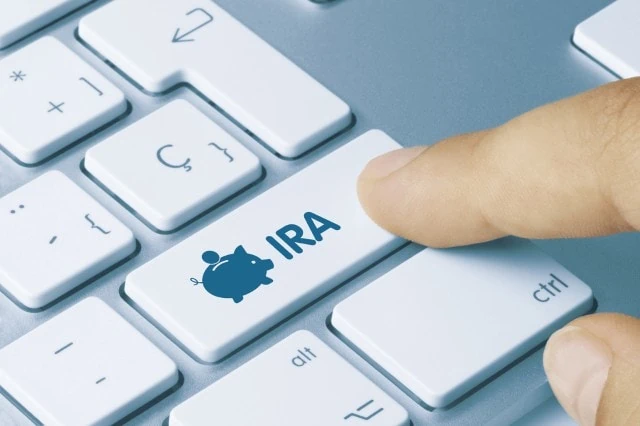Whenever you leave an employer for good, you often have a number of loose ends to address. And one of the most financially significant decisions is what to do with your 401(k) from your soon-to-be-former workplace.
When you leave a job where you had a 401(k), you have a few ways to handle that money. In some cases, you might roll the funds from your old employer’s 401(k) into your new employer’s 401(k). But in many other cases, you’ll roll over your 401(k) into your own personal account—specifically, a rollover individual retirement account (IRA).
Rollover IRAs have a number of benefits. They can keep your 401(k)’s tax advantage secure, they generally offer a wider variety of mutual funds to choose from, and they also typically allow you to invest in many other asset classes—individual stocks, individual bonds, exchange-traded funds (ETFs), and more—than you could ever touch in a 401(k).
Just make sure you don’t botch an IRA rollover.
Today, we’re going to introduce you to a few costly 401(k) rollover mistakes. The idea here is that by knowing what to look out for ahead of time, you can avoid these pitfalls and focus more on making the most of your newfound rollover IRA.
Don’t Make These 401(k) Rollover Errors

Retirement saving isn’t just about making smart moves—it’s about avoiding unforced errors.
401(k) rollovers are relatively straightforward. But if you drop the ball, you’ll have suddenly made building up your nest egg much more difficult than it ever needed to be.
With that in mind: Here’s what not to do when you roll over your 401(k).
1. Forget to Deposit Your 401(k) Check Into Your IRA on Time

The easiest path for you is a direct rollover in which your 401(k) plan administrator directly delivers your funds to your new IRA.
However, there are two other paths that put the money directly into your hands:
Direct rollover with check payable to new account
In this instance, the plan administrator sends you a check that’s payable to the new rollover IRA. It becomes your responsibility to deposit it within 60 days. If you don’t, it will be considered a taxable distribution, and you will be liable for both taxes and a penalty on any undeposited money.
(Note: Those 59½ and older would only be responsible for taxes, but not a penalty, in this situation. The same would go for anyone who leaves their job during or after the year they turn 55; this is referred to as the “rule of 55.”)
Indirect rollover
In this instance, the plan administrator pays you directly, likely with a check made out to you.
Similar to the first option, you have 60 days to deposit some or all of the money into your new IRA. However, in the event of an indirect rollover, your company will withhold taxes, so to complete a full rollover, you’ll have to contribute your own funds to make up for the missing amount.
If you failed to deposit your funds in a timely manner, you generally would have to pay any taxes still owed above what was withheld, plus a penalty. The caveats for people 59½ and older, as well as anyone covered by the rule of 55, apply here, too.
Note: Additional rules apply if Roth accounts are involved, whether you’re rolling over from a Roth 401(k), or rolling into a Roth IRA.
Related: What Is Medicare? A Guide to Types of Medicare Coverage
2. Not Investing Your 401(k) Money

401(k)s have enjoyed growing guardrails to ensure plan participants are actually putting their money to work. For instance, if you’re auto-enrolled in a 401(k) plan but don’t make an investment selection, your plan might funnel your contributions into a qualified default investment alternative (QDIA), which is effectively a default fund chosen from among the plan’s investment options.
The same can’t be said for IRAs.
At the most, any uninvested cash might be placed into a cash reserve account that invests in, say, a money market account. While the interest generated that way is better than nothing, your money would almost certainly have more growth potential invested in stocks, bonds, and various other vehicles you can access through a typical investment account.
In other words: It’s up to you to actually invest your money after you’ve rolled over 401(k) funds.
For the most part, failure to invest funds is an oversight rather than an active choice. A recent Vanguard survey asked rollover IRA account holders to provide one or more reasons why their funds had remained in cash, rather than invested. More than two-thirds (68%) said they didn’t realize how their assets were invested. Meanwhile, 48%% said they thought IRA contributions were automatically invested (they’re not). Only 35% said they preferred a cash-like investment.
How much growth are you missing out on by failing to invest your rollover funds? Vanguard estimates that for people under age 55, investing in a target-date fund (instead of keeping the money as cash after a rollover) could, on average, grow their money by more than $130,000 by age 65.
Related: What Is the Social Security COLA?
3. Falling Victim to Analysis Paralysis

OK. So you’ve rolled over your funds, and you know you need to invest that money.
Now what?
Listen. Many people don’t know how to invest for retirement. A 401(k) plan will usually at least keep things simple by only offering a handful of mutual funds with straightforward goals.
But most IRAs are going to allow you to select from among thousands of stocks, mutual funds, exchange-traded funds (ETFs), and other vehicles. And that, my friends, can lead to analysis paralysis—the inability to make a decision because you have too many options to choose from and you’re worried about making a mistake.
But the longer your money remains uninvested, the less time it has to grow.
If you can’t decide how to invest your money right away, you might want to start with a target-date fund that will provide some amount of diversification and adjust itself over time. Basic, broad-market index funds are another way to get your feet wet.
Alternatively, you could talk to a financial advisor to choose your investments. Knowing your investment choices are in the hands of an expert can give you peace of mind—and they’ll be well-equipped to put your money to work in quick order.
Related: 10 Worst 401(k) Money Mistakes to Avoid
4. Investing Much Differently Than You Did in Your 401(k)

When you move your money from a 401(k) to an IRA, there’s nothing wrong with re-evaluating your investment strategy and making tweaks. After all, as mentioned before, IRAs generally have far more investment options than a 401(k).
But you also need to be responsible.
When new investment options are available to you, and you have a lot of money to put to work, it’s easy to start allocating funds like a kid in a candy store. A few shares of this high-risk biotech, a few thousand dollars in that cryptocurrency, a flier on a hyper-complex options ETF …
If your 401(k) strategy was generally working well, you should consider similar investments within your IRA. They should match your risk tolerance. You should remain roughly as diversified. And any changes are better left to the periphery.
Again, if you aren’t confident in your investing abilities, you may want to consider using a financial advisor.
Related: How to Choose a Financial Advisor
5. Forgetting to Auto-Reinvest

Usually, a 401(k) plan administrator sets up accounts to automatically reinvest any dividends or interest earned without any action needed on your end.
But once you have your own rollover IRA, the responsibility falls to you.
Most IRA providers allow you to set up Dividend Reinvestment Plans (DRIP), which, as the name suggests, automatically reinvests dividends into whole or fractional shares of stocks, mutual funds, and other vehicles—and this maximizes the power of compound growth over time.
If you forget to set up a DRIP when you first purchase a stock or fund, don’t worry—you can typically go back and change those settings later.
Related: How to Max Out Your 401(k) + Other Retirement Accounts





![How to Make Money in Stocks [Investing in the Stock Market] 14 how to make money in stocks](https://youngandtheinvested.com/wp-content/uploads/how-to-make-money-in-stocks.jpg.webp)
![Learn to Invest by Yourself [Beat the Market With Investing Basics] 15 learn-to-invest-by-yourself](https://youngandtheinvested.com/wp-content/uploads/learn-to-invest-by-yourself-600x403.webp)
![How to Become an Investor [Exactly What It Takes] 16 how to become a successful investor](https://youngandtheinvested.com/wp-content/uploads/how-to-become-a-successful-investor.jpg.webp)
